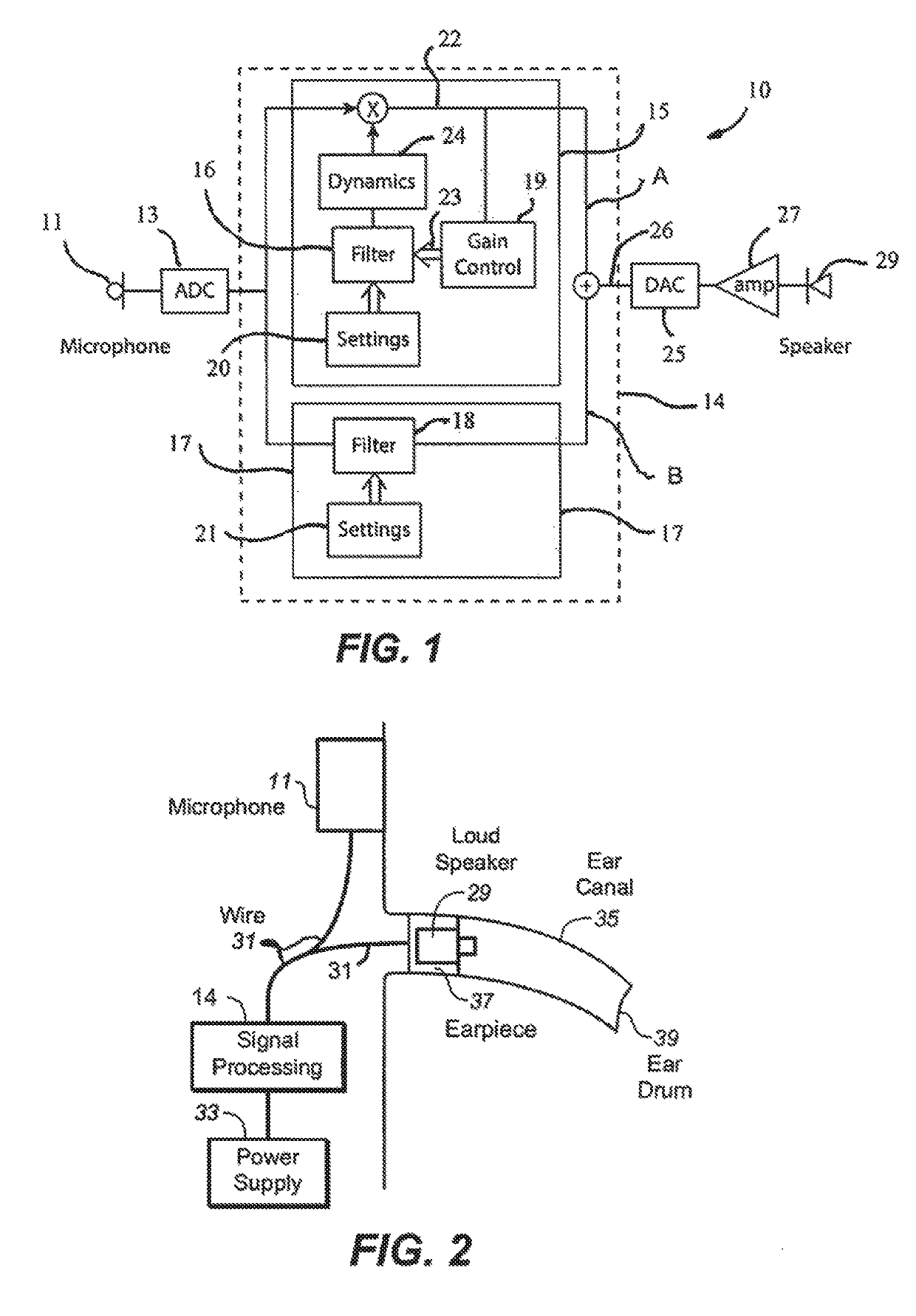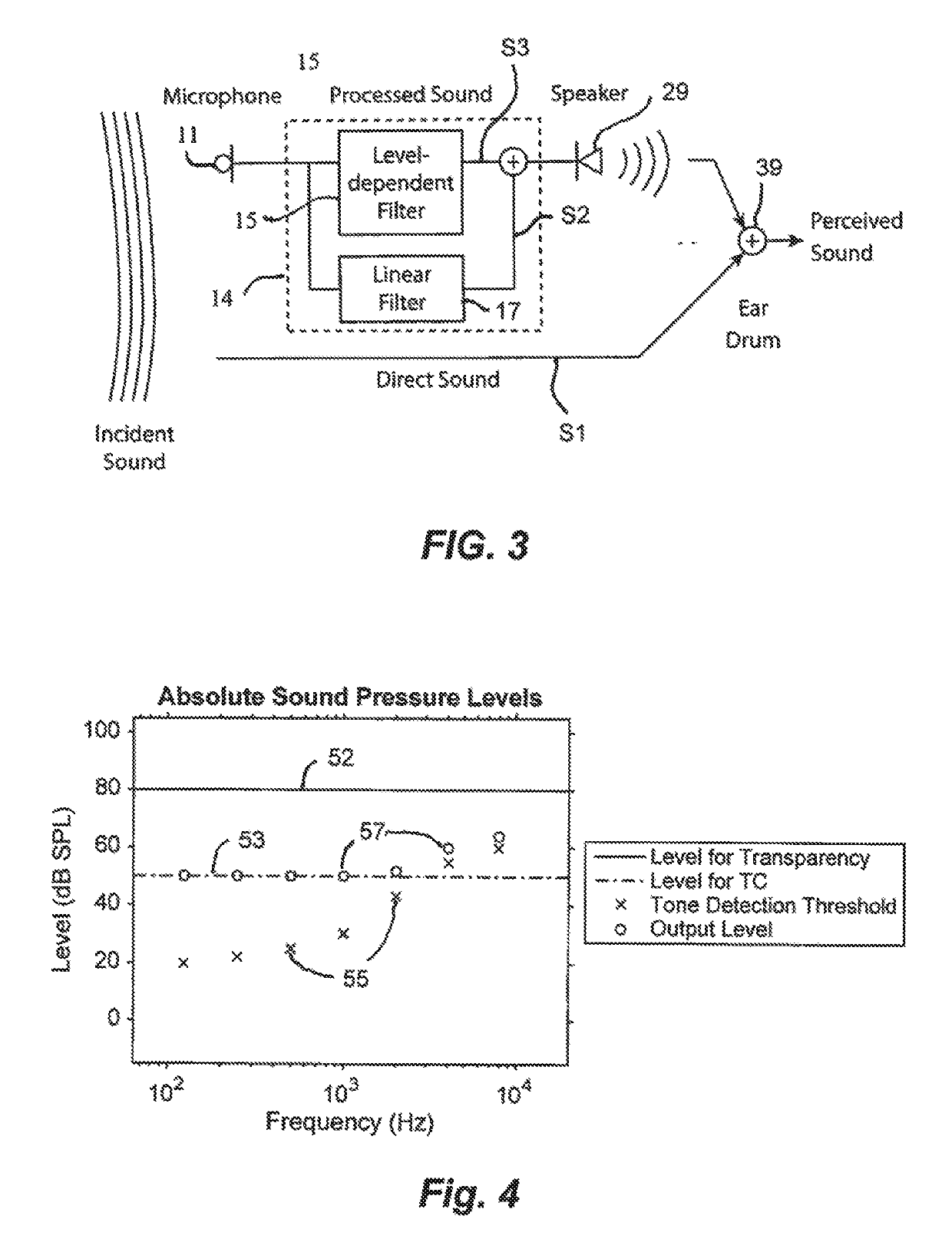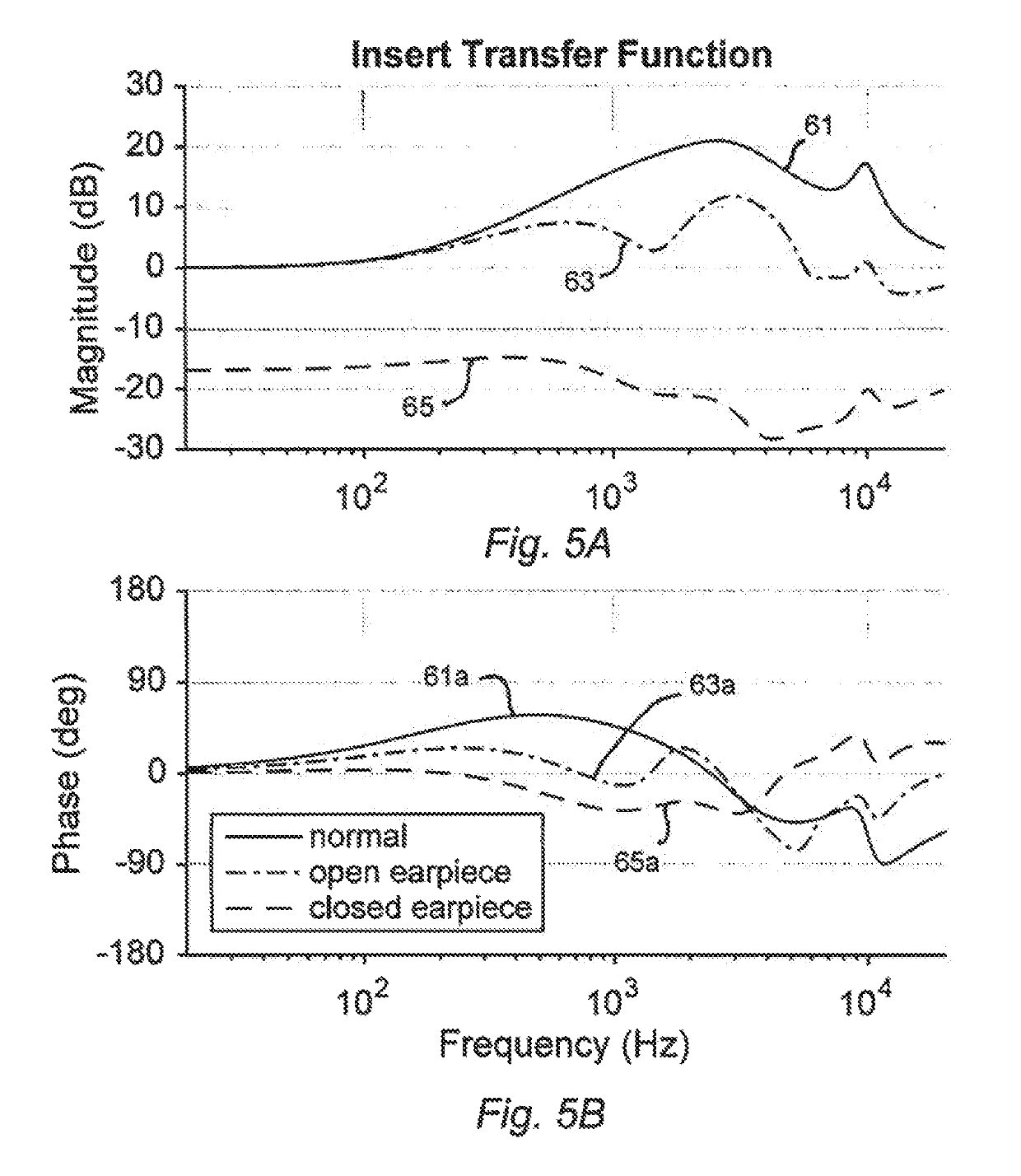Transparent hearing aid and method for fitting same
a hearing aid and transparent technology, applied in the field of hearing aids, can solve the problems of increased gain, reduced earmold's attenuation at lower frequencies, and severe attenuation of all sound frequencies, so as to improve the perceived sound quality of the user, avoid the more extreme artifacts, and increase the number and quality of spatial cues available to the user
- Summary
- Abstract
- Description
- Claims
- Application Information
AI Technical Summary
Benefits of technology
Problems solved by technology
Method used
Image
Examples
Embodiment Construction
[0033]While components of the hearing aid described herein are illustrated and described as being implemented by digital signal processing techniques, it will be appreciated that such components could instead be implemented by analog circuits. Also, while the invention is described herein as being related to a hearing aid, the invention is not intended to be limited to hearing aids used solely to correct for hearing loss. The invention could also be used in connection with hearing assist devices that do not compensate for hearing loss such as products known as PSAPs (personal sound amplification products).
[0034]Also, when referring to sound as being “amplified,” it is meant that the signal processor provides a gain that is greater the zero. Gain less than zero results in sound being attenuated.
[0035]Referring now to the drawings, FIG. 1 illustrates in block diagram form an embodiment of a hearing aid 10 having sound pick-up means, suitably microphone 11, which converts incoming (inc...
PUM
 Login to View More
Login to View More Abstract
Description
Claims
Application Information
 Login to View More
Login to View More - R&D
- Intellectual Property
- Life Sciences
- Materials
- Tech Scout
- Unparalleled Data Quality
- Higher Quality Content
- 60% Fewer Hallucinations
Browse by: Latest US Patents, China's latest patents, Technical Efficacy Thesaurus, Application Domain, Technology Topic, Popular Technical Reports.
© 2025 PatSnap. All rights reserved.Legal|Privacy policy|Modern Slavery Act Transparency Statement|Sitemap|About US| Contact US: help@patsnap.com



